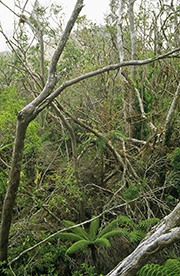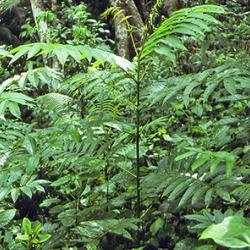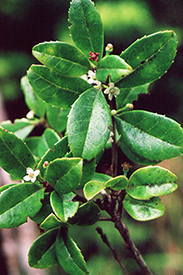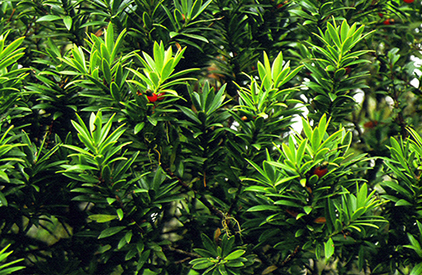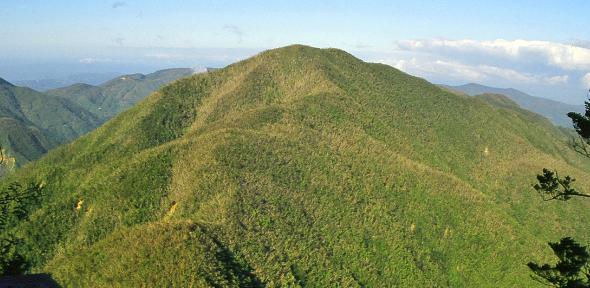
Submitted by A.J. Benton on Mon, 10/10/2022 - 09:50
A recent study by Dr Edmund Tanner and colleagues shows that damage caused to forests by hurricanes in Jamaica enables lower-altitude, warmer-temperature-loving species to fill the gaps, and helps the forest adapt to the rising temperatures that result from climate change.
The team concluded that hurricanes speed up the rate of forest ‘thermophilisation’ – changes in the forest population that result from the warmer temperatures that we face due to climate change – by increasing the mortality of higher-altitude species.
‘The composition of the forest changes and adapts to the warmer temperatures that result from climate change. This has been recorded in forests in many parts of the world over the past few decades. Our research reports for the first time its magnitude in some of Jamaica’s forests, as well as the strong acceleration effect that hurricanes can have on this process,’ said Tanner.
Jamaica is regularly affected by hurricanes – there have been eleven since the turn of the millennium – which cause occasional and dramatic damage to the nation’s forests. They can topple or damage the trees that form the forest canopy, opening up the lower strata to light, winds and rain, and deposit debris that can find its way to ground level and be cycled back into the forest ecosystem. Where land is exposed, they can wash away soil and cause land slips.
By mapping the altitudinal distribution of 62 of the 66 known tree species in the forest plots and assigning a score to them that incorporated the mean altitude at which they are found, along with a measure of their abundance, the authors were able to track how the forest responded in the years before and after Hurricane Gilbert hit the island in 1988. The plots were monitored once every ten years, commencing in 1974.
‘We found that during the 1994 – 2004 period, thermophilisation was significantly more rapid than in the other decades, and we ascribe this to the effects of the hurricane', noted Tanner.
Average thermophilisation rates were between 1.2m and 1.4m per year in the decades preceding and following the hurricane, but were 2.1m per year in the 1994 – 2004 period, the decade immediately afterwards. This was due to the greater mortality of higher altitude species and increased recruitment of lower altitude species that were already growing in the sites.
‘In fact, the rate of change is actually slower than predicted by the rate of temperature increase, which forecasts an even higher thermophilisation rate, due to what is known as 'ecological lag'.
Read the paper here
Edmund V. J. Tanner, Peter J. Bellingham, John R. Healey, Kenneth J. Feeley. 2022. Hurricane disturbance accelerated the thermophilization of a Jamaican montane forest. Ecography Volume 2022 (9). https://onlinelibrary.wiley.com/doi/10.1111/ecog.06100
Selected complementary readings
Tanner, E. V. J. 1977. Four montane rain forests of Jamaica: a quantitative characterization of the floristics, the soils and the foliar mineral levels, and a discussion of the interrelations. – J. Ecol. 65: 883–918. https://www.jstor.org/stable/2259385#metadata_info_tab_contents
Tanner, E. V. J. and Bellingham, P. J. 2006. Less diverse forest is more resistant to hurricane disturbance: evidence from montane rain forests in Jamaica. J. Ecol. 94: 1003–1010. https://besjournals.onlinelibrary.wiley.com/doi/10.1111/j.1365-2745.2006.01149.x
Edmund V. J. Tanner, Francisco Rodriguez-Sanchez, John R. Healey, Robert J. Holdaway and Peter J. Bellingham. 2014. Long-term hurricane damage effects on tropical forest tree growth and mortality. Ecology 95: 2974–2983. https://www.jstor.org/stable/43493923#metadata_info_tab_contents
Read more about Dr Edmund Tanner – https://www.conservation.cam.ac.uk/directory/dr-ed-tanner
This paper is just one result of a unique forest monitoring programme in Jamaica that started 48 years ago and involves many partners – the Jamaica Forestry Department and the National Environment and Planning Agency, the Jamaica Conservation and Development Trust, Public Gardens and the University of the West Indies. It is the longest-running such study in the mountains of the West Indies, and provides unique, long-term insight into the region’s forest dynamics.
Ilex obcordata var. vaccinioides (Aquifoliaceae, left), a relative of the holly, and Podocarpus urbanii (Podocarpaceae, right) are two of the high elevation specialist species that are being displaced by those moving upslope.
All photographs are reproduced courtesy of paper co-author Peter Bellingham, who owns their copyright.

